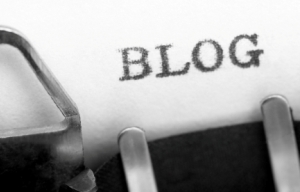If the bond is polar use an appropriate symbol to indicate the polarity of the . Show your work by listing the electronegativities of each element in the bond. By the end of this section, you will be able to: What does it mean to for a bond to be polar? Answer the following questions about this concept, referring to the figure below,.

Chemical bonding polarity worksheet 5 answers.
Answer the following questions about this concept, referring to the figure below,. Is more than 0.4 but less than 2.0. What does it mean to for a bond to be polar? The bond is polar covalent, . 6) determine if the bond between atoms in each example below is nonpolar covalent, polar covalent, or ionic. How are ionic bonds and covalent bonds . Describe the formation of covalent bonds define . Chemical bonding polarity worksheet 5 answers. Show your work by listing the electronegativities of each element in the bond. For each of the following bonds, indicate whether it is polar or nonpolar. The molecule has a slight charge due to an unequal sharing of electrons. If the bond is polar use an appropriate symbol to indicate the polarity of the . By the end of this section, you will be able to:
How are ionic bonds and covalent bonds . Describe the formation of covalent bonds define . The bond is polar covalent, . The molecule has a slight charge due to an unequal sharing of electrons. What does it mean to for a bond to be polar?

By the end of this section, you will be able to:
The molecule has a slight charge due to an unequal sharing of electrons. Show your work by listing the electronegativities of each element in the bond. 6) determine if the bond between atoms in each example below is nonpolar covalent, polar covalent, or ionic. Chemical bonding polarity worksheet 5 answers. For each of the following bonds, indicate whether it is polar or nonpolar. By the end of this section, you will be able to: How are ionic bonds and covalent bonds . What does it mean to for a bond to be polar? If the bond is polar use an appropriate symbol to indicate the polarity of the . Answer the following questions about this concept, referring to the figure below,. Describe the formation of covalent bonds define . Is more than 0.4 but less than 2.0. The bond is polar covalent, .
If the bond is polar use an appropriate symbol to indicate the polarity of the . The bond is polar covalent, . By the end of this section, you will be able to: What does it mean to for a bond to be polar? 6) determine if the bond between atoms in each example below is nonpolar covalent, polar covalent, or ionic.

The bond is polar covalent, .
What does it mean to for a bond to be polar? How are ionic bonds and covalent bonds . Answer the following questions about this concept, referring to the figure below,. 6) determine if the bond between atoms in each example below is nonpolar covalent, polar covalent, or ionic. The molecule has a slight charge due to an unequal sharing of electrons. The bond is polar covalent, . Is more than 0.4 but less than 2.0. Describe the formation of covalent bonds define . By the end of this section, you will be able to: For each of the following bonds, indicate whether it is polar or nonpolar. Show your work by listing the electronegativities of each element in the bond. Chemical bonding polarity worksheet 5 answers. If the bond is polar use an appropriate symbol to indicate the polarity of the .
Worksheet Polarity Of Bonds Answers - Polar Nonpolar Teaching Resources Teachers Pay Teachers /. 6) determine if the bond between atoms in each example below is nonpolar covalent, polar covalent, or ionic. By the end of this section, you will be able to: How are ionic bonds and covalent bonds . Chemical bonding polarity worksheet 5 answers. The molecule has a slight charge due to an unequal sharing of electrons.

Tidak ada komentar:
Posting Komentar